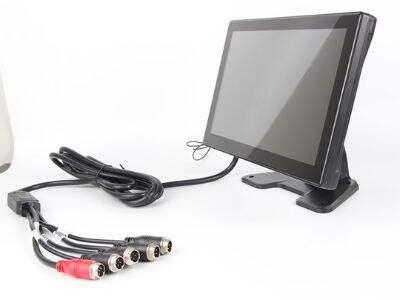Water level sensors are invaluable tools in monitoring the amount of water in a tank or reservoir. It’s a bit like having a special tool that indicates when to fill a glass of water from the faucet. Only! in order for these sensors to offer us the kind of accurate readings we want, we need to make sure they are calibrated accurately. That's where KYSAIL can help!
Realizing the significance of calibrating your water level sensor
When you calibrate a water level sensor, you're essentially training it to recognize the water levels. A sensor is of no use to us if we don’t calibrate it, because it might lie to us, and we can put too much or too little water in our tank. This can lead to a lot of troubles, such as overflowing or a lack of water when we need it really badly.
How to do it step by step - Calibrate a water level sensor for accuracy
You will require to perform these steps to calibrate your water level sensor:
Make sure the sensor is clear of any dust or dirt. This should enable it to provide more accurate readings.
Fill the tank or reservoir with water to a level that you've confirmed is right. This will serve as your guidepost.
Follow the instructions provided with the sensor and set the datapoints or knobs accordingly. This will allow the sensor to have the context on how much water there is at the reference point.
Review the readings on the sensor and verify if they correspond to the water level in the tank. If they don’t, you may need tweak the settings anew, until they do.
Solutions to the most frequent problems with water level readings
Every now and then, you may also even encounter issues after calibrating your water level sensor. Below are some common problems and solutions you might want to try.
The sensor is reading too high or too low: This might indicate that the settings are wrong. Try re-calibrating the sensor and be sure to carefully follow the instructions.
The sensor is giving no readings at all: This may mean that the sensor is not properly connected or that its batteries need to be replaced. Find the connections and try replacing the batteries to see if that does anything.
How to keep the water level sensor calibration in good condition and lasting for many years
After you have calibrated your water level sensor, you want to make sure that it's functioning properly so that it can give you the most accurate data. Below are some recommendations to keep it calibrated:
If in doubt check the sensor for damage or wear. Correct any problems if you see them.
Clean the sensor on a regular basis to avoid particles or loose dust on it, which might influence the change of the data. This will help keep it moving along.
Monitor the water level of your tank and compare it with the readings of the sensor. If you observe the discrepancy, it may be time to recalibrate the sensor.
How to calibrate your water level sensor for maximum results
With properly calibrated sensor and some maintenance tips you can ensure that it keeps working correctly and provides you with accurate readings. This will prevent you from needing to worry about the water levels in your tank or reservoir, and you will always have water when you need it. Remember, a well refined sensor is a happy sensor!
Summary
So, in the end, calibrating your 77G Radar Sensor is one of the key steps to make sure you are getting accurate readings. By doing the above and maintaining the behavior - you are yore that it will continue to work properly and effective. So make sure that you remember to show your water level sensor just how much love it truly deserves – it will repay you with accurate water readings every single time!

 EN
EN
 AR
AR
 HR
HR
 CS
CS
 DA
DA
 NL
NL
 FI
FI
 FR
FR
 DE
DE
 EL
EL
 IT
IT
 JA
JA
 KO
KO
 NO
NO
 PL
PL
 PT
PT
 RO
RO
 RU
RU
 ES
ES
 SV
SV
 IW
IW
 ID
ID
 LV
LV
 LT
LT
 SR
SR
 SK
SK
 SL
SL
 UK
UK
 SQ
SQ
 ET
ET
 HU
HU
 TH
TH
 TR
TR
 FA
FA
 AF
AF
 MK
MK
 KA
KA
 UR
UR
 BN
BN
